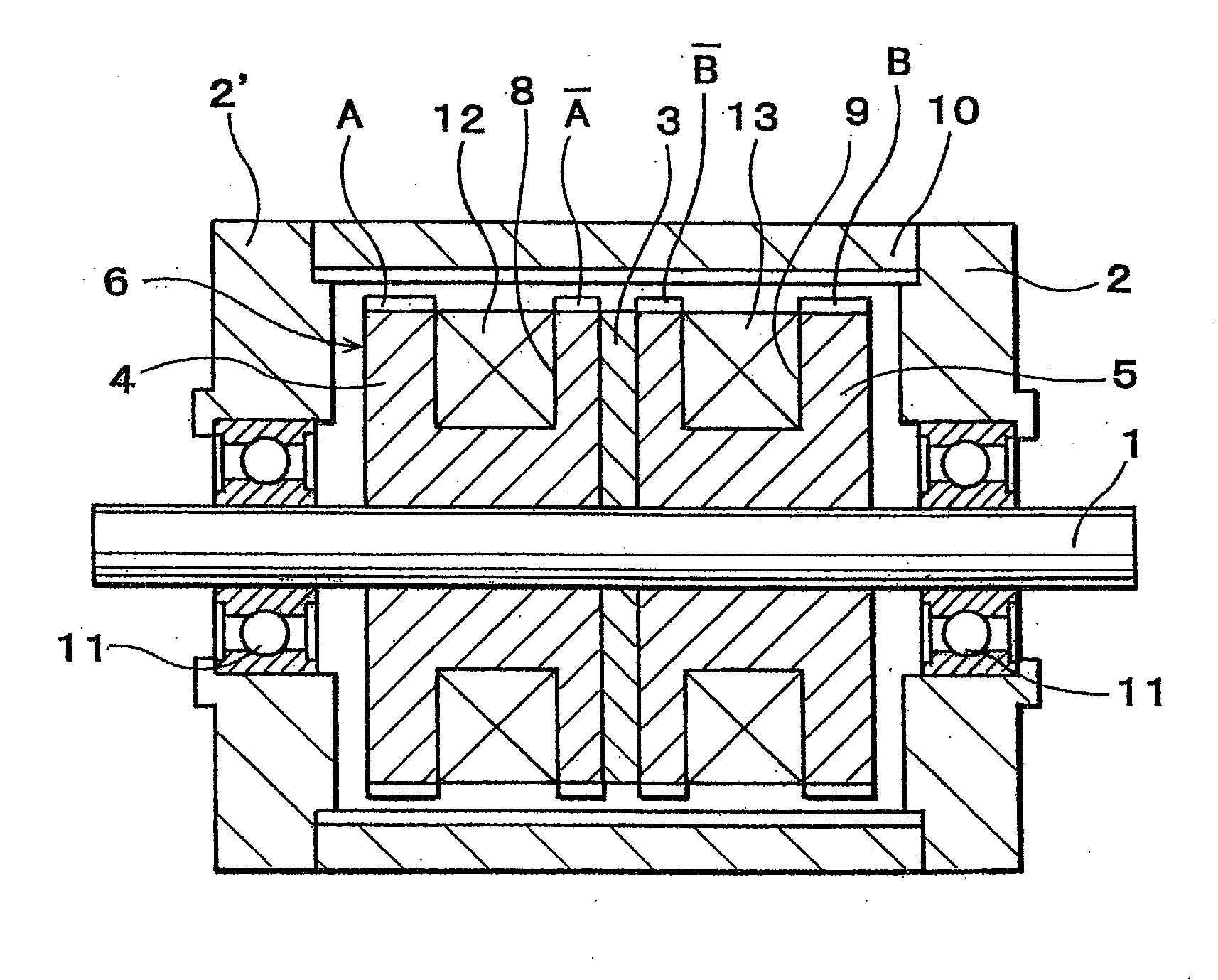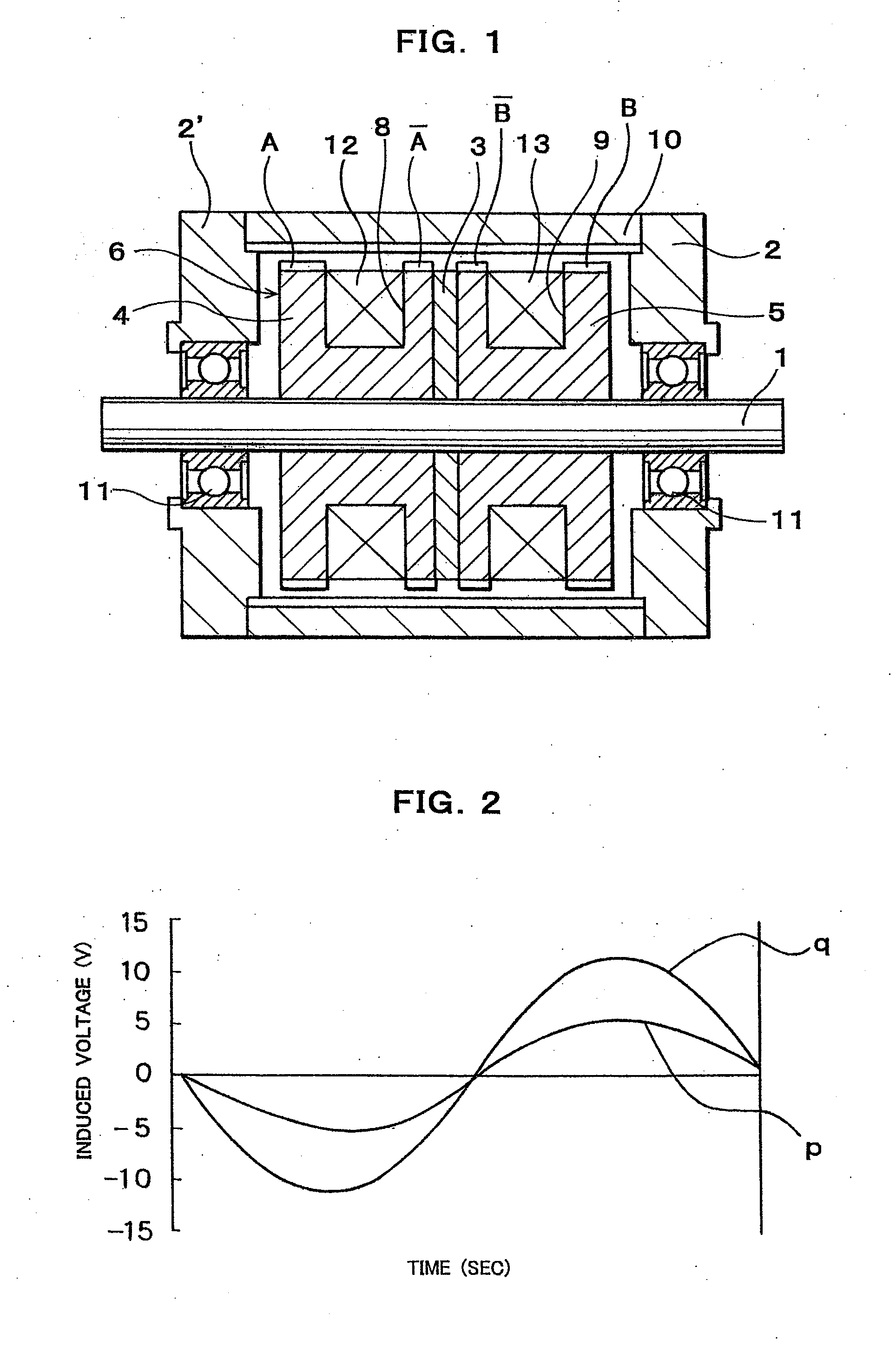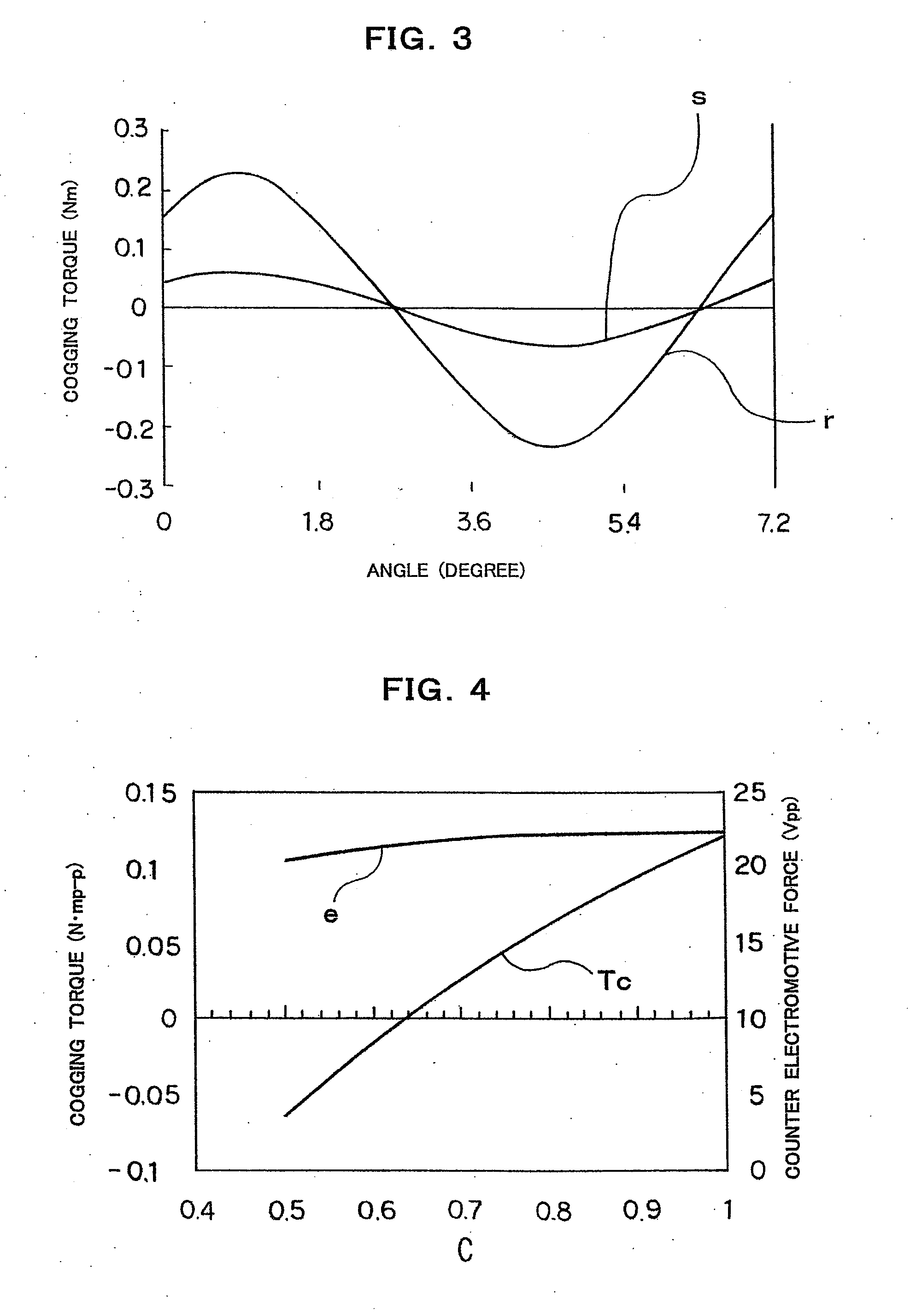Multi-Polar Rotary Machine
a rotary machine and multi-polar technology, applied in the field of multi-polar rotary machines, can solve the problems of large vibration in the motor when it is rotated, unavoidable gap formation between laminated silicon steel plates, etc., and achieve the effects of reducing the magnetic reluctance of the path, reducing the cogging torque of the motor, and increasing the magnetic flux interlinking winding
- Summary
- Abstract
- Description
- Claims
- Application Information
AI Technical Summary
Benefits of technology
Problems solved by technology
Method used
Image
Examples
first embodiment
[0070] A hybrid stepping motor of a first embodiment according to the present invention will be explained. Parts of the motor which are similar to corresponding parts of the conventional motor shown in FIG. 26 and FIG. 27 have been given corresponding reference numerals and need not be further redescribed.
[0071] As shown in FIG. 1, a multi-polar rotary machine, such as an outer rotor type two-phase hybrid stepping motor of an embodiment of the present invention comprises a stator 6 and a cylindrical outer rotor 10 arranged concentrically with the stator 6 and with an air gap therebetween.
[0072] Stator 6 has two splitted stator elements 4,5 and a ring shaped permanent magnet 3 held between the stator elements 4, 5 and magnetized so as to form N and S poles in the axial direction of the stator 6, a plurality of small stator teeth A and A separated in the axial direction of the stator 6 from each other and formed on the outer peripheral surface of one of the spaced stator elements 4, ...
second embodiment
[0079] In the present invention, a ratio C of a thickness of the small stator teeth A in the axial direction of the stator to a thickness of the small stator teeth A in the axial direction of the stator (stack ratio) is set to a value smaller than 1, preferably 0.5 to 0.8 so as to equalize substantially in mean permeance both small stator teeth A and A to each other, and a ratio C of a thickness of the small stator teeth B in axial direction of the stator to a thickness of the small stator teeth B in the axial direction of the stator (stack ratio) is set to a value smaller than 1, preferably 0.5 to 0.8 so as to equalize substantially in mean permeance both small stator teeth B and B to each other.
[0080]FIG. 4 is a diagram showing a characteristic feature of the cogging torque Tc and the counter electromotive force e with respect to the stack ratio C of the stator core. In FIG. 4, the abscissa shows the ratio C and the ordinate shows the counter electromotive force e and the cogging ...
third embodiment
[0082] In the present invention, the small rotor teeth of the rotor 10 are arranged with vernier pitch different from the regular pitch of 7.2°, that is 360° / 50 in case that the number of the small rotor teeth is 50, for example. The small rotor teeth of the vernier pitch are divided into two, for example, and a gap is formed between divided small rotor teeth so that the divided small rotor teeth are arranged axisymmetrically, in order to eliminate an unbalance magnetic attractive force in the radial direction of the rotor.
[0083] In this case, the small stator teeth A, A, B and B are circumferentially shifted from the small rotor teeth by 0°, 180°, 90° and 270° in electrical angle, respectively, as shown in FIG. 6.
[0084] Further, in the other embodiment of present invention, the same effect can be obtained by arranging the small stator teeth of the stator with vernier pitch, instead of the small rotor teeth of the rotor.
[0085] (Equivalent Magnetic Circuit of Motor)
[0086] In order...
PUM
 Login to View More
Login to View More Abstract
Description
Claims
Application Information
 Login to View More
Login to View More - R&D
- Intellectual Property
- Life Sciences
- Materials
- Tech Scout
- Unparalleled Data Quality
- Higher Quality Content
- 60% Fewer Hallucinations
Browse by: Latest US Patents, China's latest patents, Technical Efficacy Thesaurus, Application Domain, Technology Topic, Popular Technical Reports.
© 2025 PatSnap. All rights reserved.Legal|Privacy policy|Modern Slavery Act Transparency Statement|Sitemap|About US| Contact US: help@patsnap.com



